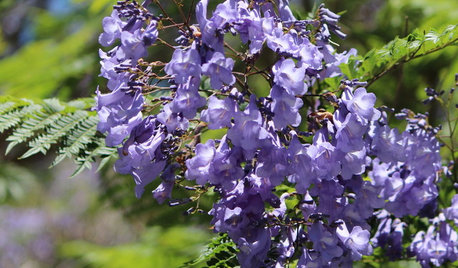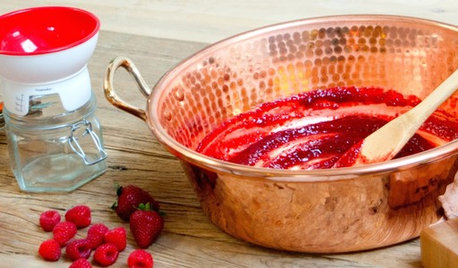Thining peaches and apricots
waiting_gw
10 years ago
Related Stories

EDIBLE GARDENSHow to Grow Your Own Peaches and Nectarines
Make gardening a little sweeter with these juicy fruits, which you can eat after plucking or preserve for later
Full Story
EDIBLE GARDENSGrow Plum Hybrids for Your Favorite Fruit Flavors
Plums are cozying up with apricots, peaches and even cherries — here’s how to grow these hybrids for the best aspects of each
Full Story
CALIFORNIA GARDENINGCalifornia Gardener's July Checklist
Bite into tree-fresh apricots, inhale delightful garden perfumes and continue planting vegetables for a late-summer harvest
Full Story
SHOP HOUZZHouzz Products: Save a Taste of Summer
Can't bear to part with the flavors of summer peaches, berries and tomatoes? Then jam on it!
Full Story
EDIBLE GARDENSHow to Grow Your Own Luscious Cherries
Nope, they’re not the easiest fruit to grow. But with spectacular blossoms and pies as possibilities, cherries are sure worth a try
Full Story
FRUIT TREESHow to Grow Your Own Juicy Plums
Easier than other stone fruits and with a variety of colors to choose from, plums are a versatile garden addition
Full Story
PRODUCT PICKSGuest Picks: Slices of Orange for a Cheerier February
Sprinkle these orange accessories around your home for a brighter outlook on gray days
Full Story
EDIBLE GARDENSHow to Grow 10 Favorite Fruit Trees at Home
Plant a mini orchard in fall, winter or early spring to enjoy fresh-off-the-tree fruit the following year
Full Story
DECORATING GUIDESFeast on Farm-Fresh Color
Rooms need a color fix? Take a peek inside your market basket — nature's palette is hard to beat for paint, fabrics and accessories
Full Story
FARM YOUR YARDIf You Have Room for Only One Fruit Tree ...
Juice up a small garden with one of these easier-care or worth-the-effort fruit trees for a mild climate
Full Story






jean001a
fruitnut Z7 4500ft SW TX
Related Professionals
Carson Landscape Architects & Landscape Designers · Fort Lee Landscape Architects & Landscape Designers · Norton Shores Landscape Architects & Landscape Designers · Jackson Landscape Contractors · Woburn Landscape Contractors · Barrington Landscape Contractors · Clayton Landscape Contractors · Cudahy Landscape Contractors · Fair Lawn Landscape Contractors · Lancaster Landscape Contractors · Long Branch Landscape Contractors · Marlborough Landscape Contractors · Mission Landscape Contractors · Ringwood Landscape Contractors · Setauket-East Setauket Landscape Contractorsfruitnut Z7 4500ft SW TX
MrClint
bamboo_rabbit
alan haigh
alan haigh
alan haigh
fruitnut Z7 4500ft SW TX
bamboo_rabbit
alan haigh
bamboo_rabbit
bamboo_rabbit
fruitnut Z7 4500ft SW TX
bamboo_rabbit
alan haigh
alan haigh
fruitnut Z7 4500ft SW TX
alan haigh
alan haigh
bamboo_rabbit
alan haigh
olpea
fruitnut Z7 4500ft SW TX
olpea
alan haigh
olpea